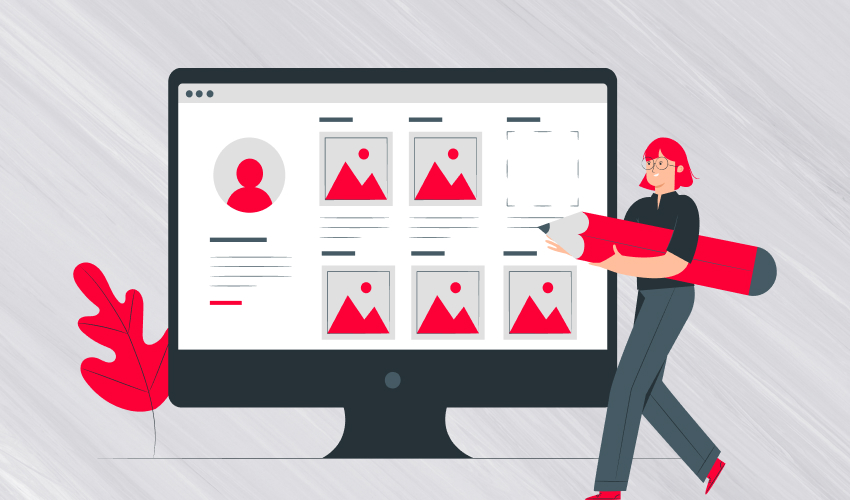UI testing: what it is and why it is needed

UI testing is an important stage in website development, as it helps to determine whether it is user-friendly. With the help of UI testing, they check how intuitive the design and location of blocks are, whether all the buttons work, etc.
In this article we will tell you in detail what UI-testing is, why website development cannot do without it, and how this process is carried out in MEGASITE.
What you need to know about UI-testing
User interface testing (UI-testing) is a part of complex testing of a website, program, mobile application or software, during which UI-specialists determine how well all interface components are made.
UI testing is used to check:
- website design, including compliance with the visual concept of the brand, ensuring a uniform look on all pages;
- ease of navigation;
- functionality;
- user-friendliness (usability);
- site performance;
- smooth operation (consistency) of all elements;
- compliance with the standards of the platform for which the site/application is created (Android, iOS, Windows, etc.);
- whether all elements of the site are displayed correctly on different devices;
- how well feedback forms work;
- adaptation of the interface to different languages;
- content structuring - clear and understandable;
- quality of protection of user data from hacking and other threats.
The price for creation site necessarily includes UI testing. Without this service there is a high risk of getting a low-quality resource that constantly hangs or is inconvenient to use.
What tasks UI testing solves
High-quality UI-testing allows you to solve several key tasks:
- to make the site comfortable to use. UI specialists check how intuitive and clear the interface is for the user, including navigation, layout of elements and text readability;
- detect and eliminate errors. With the help of special tools, UI-specialists detect bugs in the interface, including incorrect display of elements, incorrect functioning of buttons and forms;
- check the adaptability of the interface - how the site works on different devices (PC, smartphone, tablet, laptop), browsers, OS;
- improve performance. Users appreciate speed, and if pages take longer than 5 seconds to load, they may leave the site or application. Therefore, the UI specialist's job is to evaluate how fast the interface loads and works;
- checking for compliance with standards and requirements to UI, which are put forward by search engines, play-markets and other systems through which the product is planned to be promoted. For example, PlayMarket will refuse to download an application if it does not meet all the requirements.
Thus, regular UI testing and troubleshooting help to make a quality product (website, application, software) that attracts users and makes it popular.
What are the standards for UI testing?
There is a list of UI-standards, compliance with which increases the chances of a good usability evaluation. And whether a site meets these requirements is necessarily revealed by UI tests.

Accessibility
It is important that the product is accessible to everyone, including people with disabilities. For example:
- if the user has problems with vision or hearing, it is necessary to provide him with an alternative way of receiving information - audio description, subtitles;
- if a person has difficulties in processing or perceiving information (dyslexia, attention deficit), simplified text, structured data, visual cues, minimum distracting elements are needed;
- if the internet speed is slow or old devices that do not support modern technologies are used for work, it is necessary to create a simplified version that adjusts automatically.
People with different levels of computer proficiency should also have no problem using your site.
Easy to navigate and clear interface
The interface should follow the guidelines of the platform for which the site is designed:
- Fluent Design System - Microsoft;
- Material Design - Google;
- Human Interface Guidelines - Apple.
The interface itself should be instinctively clear so that it is easy to use. Navigation is as simple, quick and easy as possible. People shouldn't have to think about what to do. By clicking on buttons, they should be on the right page as quickly as possible.
High performance
To evaluate the performance of a website or app, UI specialists determine the speed at which pages and content load, especially if the images are of high quality. The goal is to make sure the product doesn't slow down and opens in a couple of seconds. If the process can take time, it's worth placing a visual element, such as a spinning wheel. This way users will know that the site is not hanging and information is being processed.
Adaptability
People use smartphones on par with computers. So when working on your website, make sure it is able to automatically adapt to different smartphone formats without losing its quality.
Quick and smooth transition between scenarios
It's about a combination of actions that follow each other smoothly, exactly as the user expects. What should be missing from a good UI:
- unnecessarily long processes with lots of steps and screens/pages to go through;
- unnecessary or inappropriate pop-ups between commands;
- needing to take the same step twice or missing necessary steps;
- inability to do a desired action (e.g., pay a bill).
All of these annoy the user and increase the risk of leaving for a competitor.
Approaches to UI testing
There are several testing methods, and they work best in an integrated way. Depending on the method of conducting, two variants are distinguished:
- manual testing. UI tests made manually allow you to find errors that are not detected by automatic testing. This option is more expensive because it involves additional human resources. There may be problems with error detection when working with sites/applications with complex functionality;
- automated testing - conducted with the help of special programs and scripts, the human role is minimal. Among the advantages of this method are speed, reliability, release of testers from routine tasks. The disadvantages are the complexity of work at the initial stage, the need to constantly update testing programs. In addition, this method does not allow you to completely exclude manual testing when you need a subtle and personalized approach.
Manual testing is more suitable for the early stages of development, as well as for checking the usability of the interface. Automated testing is a great option if you need to perform end-to-end testing or check how the site works after making changes.
Checklist for UI testing
Testers work according to a checklist - a step-by-step plan that helps to fully test a site and make sure it meets all requirements and standards.
Exactly what points need to be tested depends on the project, but there are basic categories that are mandatory to test:
- visual testing. The specialist checks the correct display of all interface elements (buttons, input fields, icons, images, etc.) on screens of different sizes. Checks whether the elements do not overlap, whether the images are displayed correctly and other things;
- functionality check. The specialist makes sure that all buttons and links work correctly and lead to the right pages or actions. Also checks the work of interactive elements (drop-down lists, toggles, tabs, etc.) and so on;
- compatibility check. The specialist tests the interface on different devices and browsers. Checks the correctness of display and operation of the interface when the orientation of the device changes (from horizontal to vertical and vice versa);
- usability test. UI-tester determines how logical and intuitive navigation is, whether text elements are easy to read (font size, color, contrast). It also evaluates how easy it is for a user to perform basic tasks (register, find information, make a purchase);
- performance check. UI-specialist determines the loading time of pages and interfaces, makes sure that there are no delays when interacting with different elements. Checks whether there are no visual bugs or failures at low internet speed or limited system resources.
To make a quality check, it is important to make a detailed checklist that minimizes the risk of missing important points. This helps testers to quickly orient themselves in the task, to perform it consistently and qualitatively.
To learn more about UI-testing: contact the manager of IT-company MEGASITE. We have been creating websites for more than 10 years, we are well versed in all the nuances and will help you to make the interface of your site convenient and attractive to users.
If you want to order website creation and get a successful and high-quality product, leave your contacts in the feedback form on our website or call us +38 (050) 3986 274.
Your project
Call/write:


